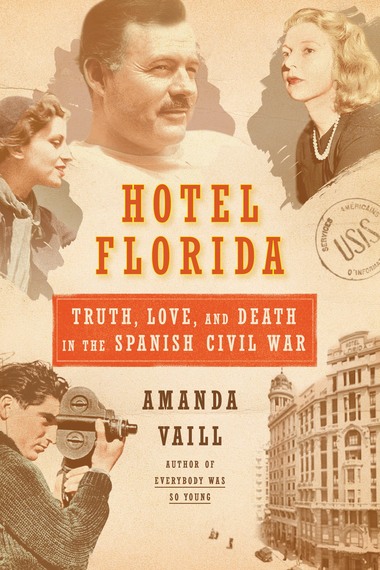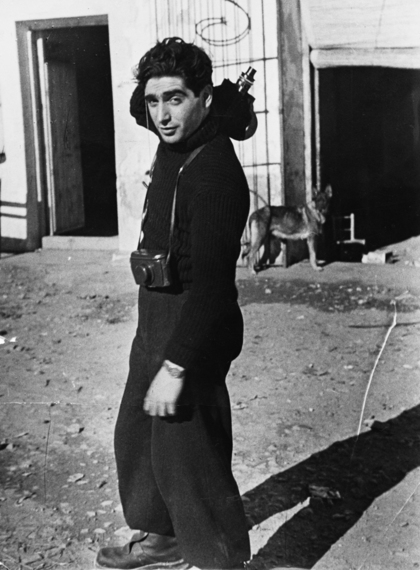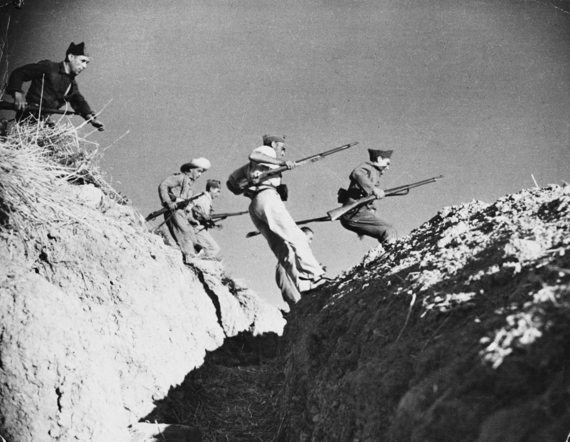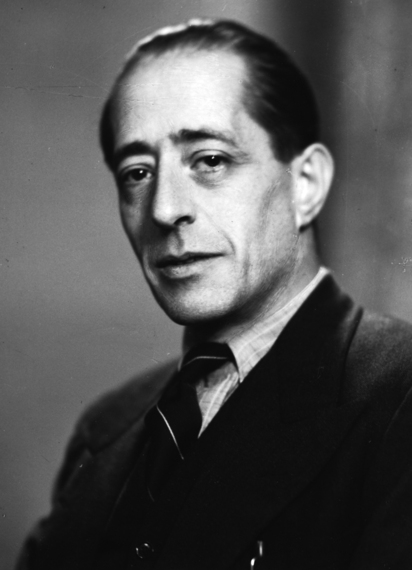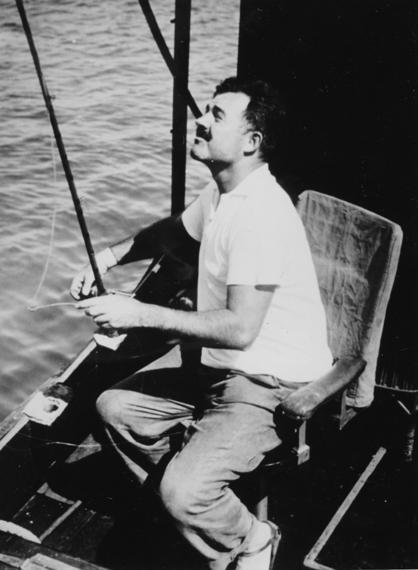Author Amanda Vaill, whose Everybody Was So Young (Houghton Mifflin, 1998) described how the lives of Gerald and Sara Murphy intertwined with the likes of Scott Fitzgerald, Ernest Hemingway and Archibald MacLeish in 1920s Paris and the French Riviera, has discovered a new nexus:
Madrid's Hotel Florida, during the Spanish Civil War of the 1930s.
"I was thinking about the Murphy's in the 1920s and all their bravery and optimism and modernism," she says about the birth of Hotel Florida (Farrar, Straus and Giroux, 2014), her new book. "But in the 1930s, the darkness then was not unlike the last decade in this world."
She was inspired also by a line in Hemingway's play from the same era, The Fifth Column: "You could learn as much in the Hotel Florida in those years as anywhere in the world."
Indeed. With a cast of characters that includes Martha Gellhorn, John Dos Passos and Robert Capa -- among many others -- the hotel was at the center of journalistic action in the war that was a run-up to World War II.
A left-leaning Spanish Republic was under siege by a fascist-backed army under General Francisco Franco. Hitler and Mussolini supplied Franco with material, aircraft and soldiers. Joseph Stalin was backing the Republic, trading men and material for all of Spain's reserves of gold and silver, shipping them off to Odessa and then Moscow under cover of darkness.
"At a dinner party in Moscow, Stalin gave toast to the Spanish gold," she says. "He said it would be like the ears on a Spaniard's head -- they would know it was there but would never see it."
And he was right.
Three years later, seeing not only that Spain's Republic was on the losing end of its war, but that Hitler was unopposed in Eastern Europe and Czechoslovakia, Stalin switched sides. He signed the Molotov-Ribbentrop pact in 1939, secretly splitting up Poland with Germany. He'd already declared that Spain had used up its gold and silver reserves on war materials, and turned away.
"Essentially, he stabbed his protégés in the back," she says.
But for any serious war correspondent in the late 1930s, there were only two places to take up your craft:
One was inside the walls of the Hotel Florida -- and the other was on the front lines in the war between Spain's fascist and Republican armies.
Hemingway knew it, as did Martha Gellhorn. Photojournalist Capa made his name there, along with his sidekick, Gerda Taro. All were monitored by censors Arturo and Ilsa Barea in the Foreign Ministry's Press office.
"It was like the Grand Hotel," says Vaill.

Ernest Hemingway and Martha Gellhorn
Hemingway arrived with a newly developed social conscience, soon to be joined by Gellhorn, his equally new lover. At a creative dead end, he was looking for inspiration.
"The war came along and he saw the opportunity to write about struggle and bloodshed and very elemental things," she says. "But he becomes more a propagandist than a journalist -- he's writing what people tell him to write rather than what's true."
Vaill pulls no punches with Gellhorn either; her image as courageous war correspondent loses some of its luster here. "I thought I was going to find a pioneering woman on the front lines in Spain," she says. "I was surprised to find that despite her passion and her almost self-righteousness, she was not always truthful -- she would rewrite history, rearrange facts and almost make things up."
The 22-year-old Capa and 27-year-old Taro were young, fearless and eager for money and fame. Capa in particular was known for using his camera as a weapon -- but neither of them shrank from battle. "The way they put their bodies on the line -- I have nothing but admiration for that," she says.
Their early photographs may have been propagandistic, but as the war raged on, they threw themselves into the fighting. "Very soon, the horrors of the war overtook them and their photos became less stylized, and the formal elegance gave way to chaos as the story overtook what they thought the story was," she says.
As locals, the Bareas offer a balance and perspective to Vaill's narrative. "I needed someone who had skin in the game for the war itself," she says. "I wanted someone who would intersect with the other key players and be where they were."
In 1937, Taro became the first female photojournalist to be killed in action. And at the defeat of the Republic in 1938, the Bareas would move first to France and then to Great Britain, where he would work for the BBC and both would write and publish books.
Capa would survive the war and earn the fame and fortune he sought, only to be killed in 1954 in the First Indochina War.
Gellhorn would move with Hemingway to Cuba, marry him and then divorce him. Hemingway, though, would triumph professionally, making the most of his experiences and acquaintances in Spain.
By 1939, he'd written his first draft of For Whom the Bell Tolls. "It would become his most successful novel to date," Vaill says. "He makes a movie from it -- and makes a lot of money."
In short, after a two-year stay at the Hotel Florida and an extensive foray into Spain's war-torn countryside, novelist Ernest Hemingway was back.
For more information, go to http://www.amandavaill.com/Home.html
J. Michael Welton writes about architecture, art and design for national and international em>publications. He also edits and publishes a digital design magazine at www.architectsandartisans.com, where portions of this post first appeared.
